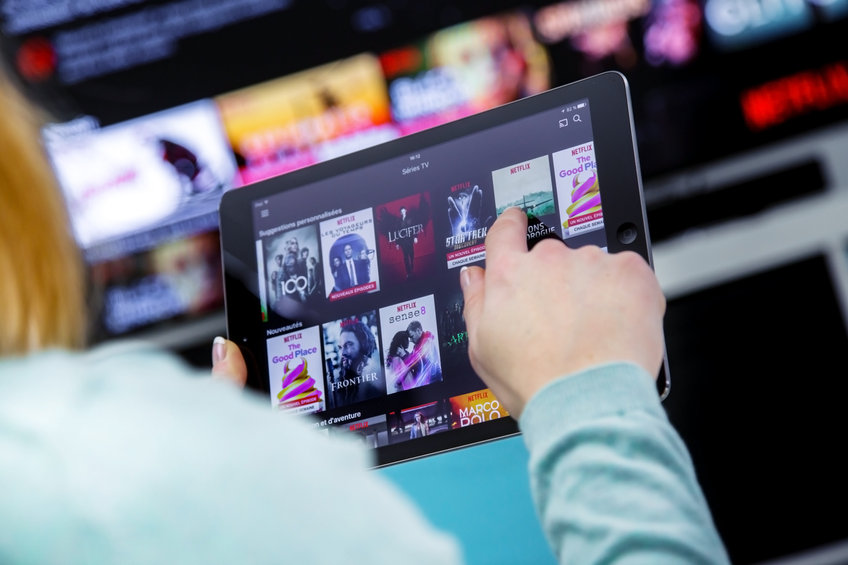We’re in the midst of a media revolution. Seemingly every content publisher in existence is launching their own digital distribution platform. As a result, many content publishers are finding themselves involved in something new: A direct relationship with the consumer. To nurture and secure these new ties, content publishers are investing an incredible amount in building new digital experiences for their audience — experiences that are fast, high-quality and spoiler-free.
It’s clear why some media giants, like Disney, have been so successful in this transition: they are experts in consumer relationships. (Anyone who’s taken their kid to Disneyland knows the company understands their audience and delivers experiences beyond their expectations.)
Other content producers are newer to the direct-to-customer game. But all of them — from ESPN to BBC to the NFL — face an indisputable truth: In the streaming world, speed is the bedrock upon which great consumer experiences are built.
The evolution of speed
How will media companies meet consumers’ speedy expectations? It’s a complex challenge that goes far beyond just breaking down the bytes.
We’re at a crossroads when it comes to streaming latency, which is the time it takes to get from “glass to glass,” from the camera’s lens to your screen. Traditional television broadcasts have always aired a few tens of seconds after live action, depending on how many miles or oceans you are away from the source. Broadcast streaming, on the other hand, is often twenty seconds or more behind “live.” In the world of live sports, that’s a long time — and a plenty big window for quick-draw text messages or social media posts to spoil the fan experience.
Content distributors, who hate spoilers just as much as the rest of us, are working around the clock to shorten these lags as part of overall tech stack upgrades. After all, reduced latency is a competitive differentiator, a surefire way to attract and retain viewership as the streaming wars and competition for subscriptions heat up. So, everyone in the game is racing to achieve the next level of speed. “Low latency” will cut lags down to two to five seconds.
Let’s get (slightly) technical
Unfortunately, the journey to low latency is anything but speedy. From the point where the produced live feed is first sent out into the world, all the way to your smart TV, there are numerous bumps in the road — some which are unavoidable and acceptable, and some of which need to be addressed.
Here are a few factors that can introduce latency:
- Encoding and transcoding – essentially, the process of decoding your incoming media stream and re-encoding it with the destination parameter settings
- Ad insertion and synchronization
- Digital rights management and blackout policy enforcement
- Protocol level configurations and considerations such as chunk sizes, Common Media Application Format (CMAF) and segment lengths
- Rendition – the higher the video quality, the more computationally expensive (read: slower) it is to manipulate
Addressing these hurdles isn’t always simple, or cheap. For example, encoding and transcoding requires new conversion hardware. And some content delivery networks charge extra to carry these low latency streams to the end user.
Rendition is an especially large hurdle, made more complicated by the industry’s simultaneous effort to upgrade broadcast quality from 1080p to 4K. On a screen, 4K content contains more than 8 million pixels, compared to just 2 million for 1080p.
That makes a big difference in viewer experience. To achieve 4K resolution, you need to use a 4K camera. An NFL game uses 12 to 20 such cameras, at tens of thousands of dollars a pop. And, of course, all that data requires upgrades to storage, cabling and processing power.
Added together, a speedy viewer experience might sound complex, expensive — even intimidating. But in our present-day battle for viewership, it’s an undeniably worthwhile investment.
P.S. – How low can (or should) you go?
Within a couple of years, we should be enjoying commonly available low latency. And something’s looming further out on the horizon: ultra-low latency, which promises lag times under two seconds.
But should content providers hurry to make the switch? Probably not. While a lag-free streaming experience sounds incredible, it’s also incredibly expensive — far too expensive for all but the most niche uses, like bidding in virtual auctions or betting on horse races. They’ll also be working to make the switch from 4K to 8K, to boot, which will further slow adoption.
So, for now, low latency is going to be an enormous improvement. After all, it’s going to be hard for your buddy to text you the results of the game in the three extra seconds it takes you to see it for yourself. And that is a beautiful thing.

